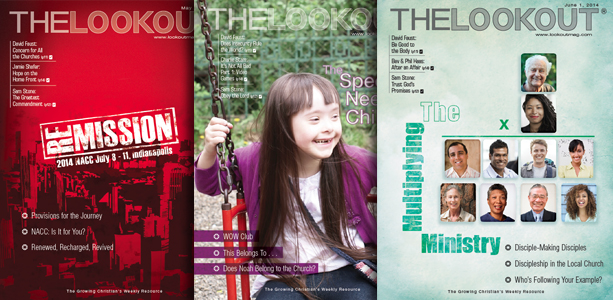By Sam E. Stone
 Only 38 verses long, Haggai is the second shortest book of the Old Testament (after Obadiah). It is filled with important teaching, however.
Only 38 verses long, Haggai is the second shortest book of the Old Testament (after Obadiah). It is filled with important teaching, however.
In last week’s lesson, the prophet Haggai called the people back to their task of rebuilding the temple. They had ignored their responsibility for 16 years! His challenge had an immediate effect. The people accepted God’s message, and within 24 days the work was underway. The work was resumed with the right spirit (1:12), with divine blessing (vv. 13, 14), and with haste (v. 15).
Building a Temple
Haggai 1:12-15
The same two people addressed in the book’s opening verses—Zerubbabel (the governor of Judah) and Joshua (the high priest)—are again noted as the authorized leaders for the nation. Their positive influence had been successful. The whole remnant of the people obeyed the voice of the Lord. Now the people resumed work on the temple. God blessed their efforts, empowering and sustaining them.
The remnant is mentioned often in the Old Testament. It describes what remains of a people or group after most have been destroyed or lost through dispersal. In this case the remnant consisted of the small segment of God’s people who returned to Judah after Babylonian exile (Nehemiah 1:2, 3). The term is also used in a broader sense to describe those who are obedient to God, even when the majority of people are not.
The hope that God offers is summarized in his familiar words, “I am with you” (repeated in Haggai 2:4). These words have often brought encouragement, support, and hope to the Lord’s people over the ages (for example: Genesis 26:3; Isaiah 43:5; Matthew 28:20).
Blessing a Temple
Haggai 2:1-9
This chapter contains three words from God delivered by Haggai. The first oracle (2:1-9) speaks of the glory of the new temple. C. F. Keil wrote, “In the second year of the return from Babylon, when the foundation for the temple . . . was laid in the reign of Cyrus, many old men, who had seen the temple of Solomon, burst out into loud weeping when they saw the new foundation (Ezra 3:10-13). A similar feeling of mourning and despair appears to have taken possession of the people and their rulers immediately after the work had been resumed under Darius. Doubts arose whether the new building was really well-pleasing to the Lord, and ought to be carried on.”
Haggai’s message reassured the people. God encouraged them about the glory of the future temple on the last day of the very festival during which the first temple had been dedicated. God instructed Haggai to challenge their preconceptions about the temple. Its former glory reminded them of Solomon’s temple (1 Kings 6), but the new temple would be superior in other ways.
The Lord told Haggai to command the remnant, “Be strong, all you people of the land . . . and work.” Again God promised, “I am with you.” The Lord tied his blessing on them and reminded them that he had covenanted with the people when they came out of Egypt and his Spirit remains among them.
With God beside them, they had nothing to fear. The Lord had provided for his people in the past (see Judges 6:34, 35; 15:14, 15). This should have made them confident that he would continue to meet their needs. God told them, “Be strong.” These were the same words spoken by David to Solomon before building the first temple (1 Chronicles 28:10). God always keeps his promises.
Haggai then described how God will once more shake the heavens and the earth, the sea and the dry land. This verse is quoted in Hebrews where Jesus is shown to be the mediator of a new covenant (Hebrews 12:24-26). Bible students differ in interpreting some of the details. The main lesson is, “The glory of this present house will be greater than the glory of the former house.”
James E. Smith offered a wise approach: “This promise, therefore, must be interpreted spiritually of the messianic temple, the church of Christ. The temple which was under construction in 520 BC was but a type or shadow of the spiritual temple of the New Testament dispensation, a temple built up of living stones—the precious souls which obey the gospel (1 Peter 2:5). The messianic temple is superior to the material temple in its worship, its builder, its dimensions, its materials, its influence, and its duration.”
Sam E. Stone is the former editor of Christian Standard. He continues his writing and speaking ministry from his home in Cincinnati, Ohio.



Comments: no replies